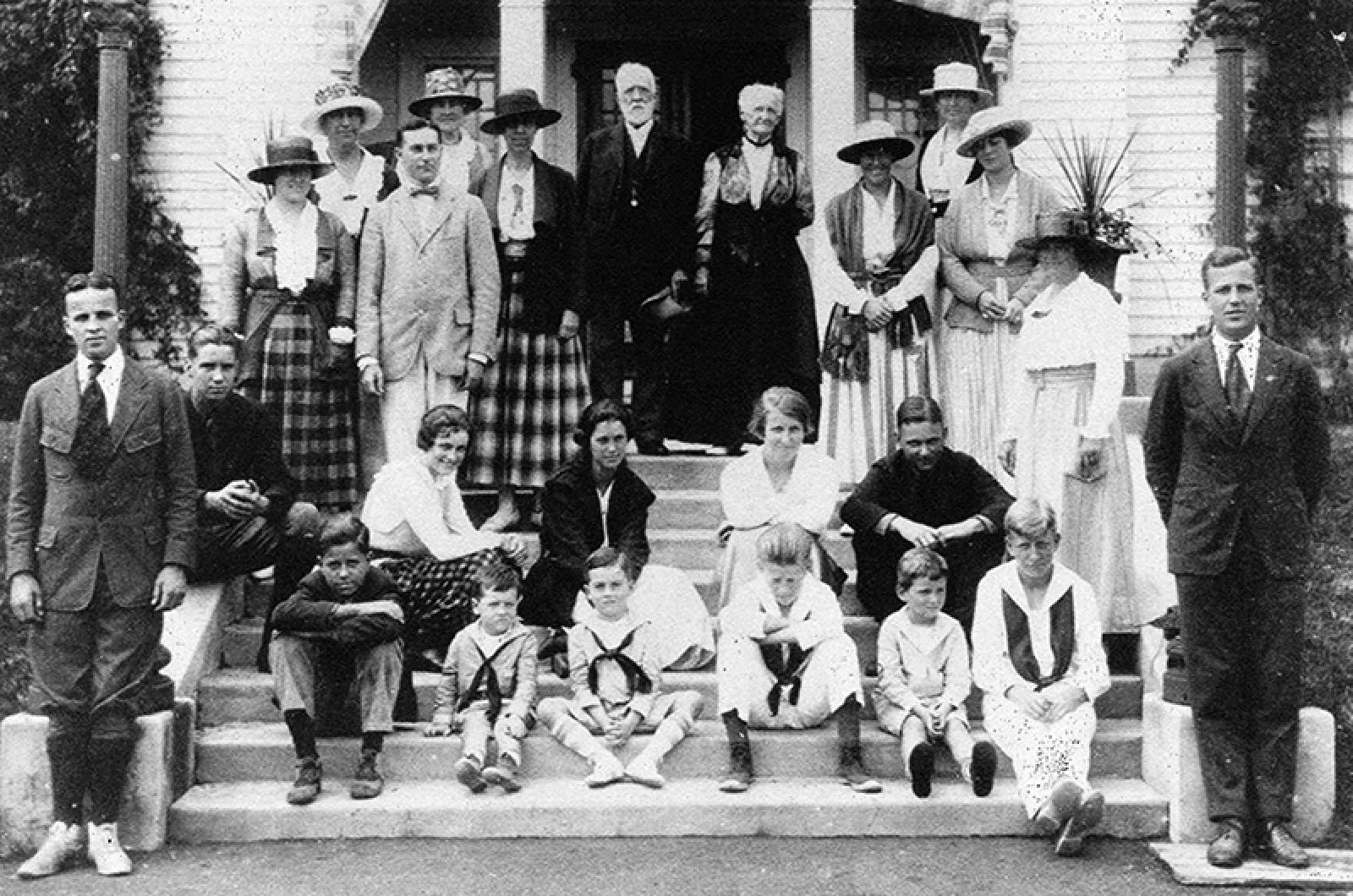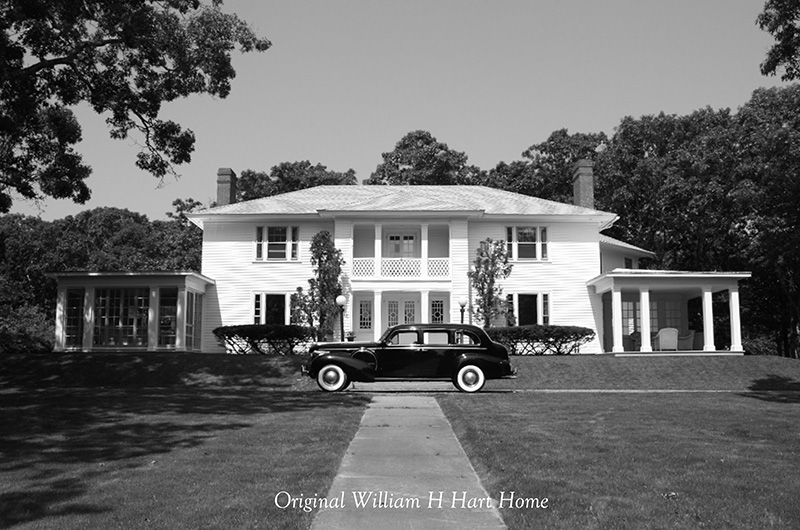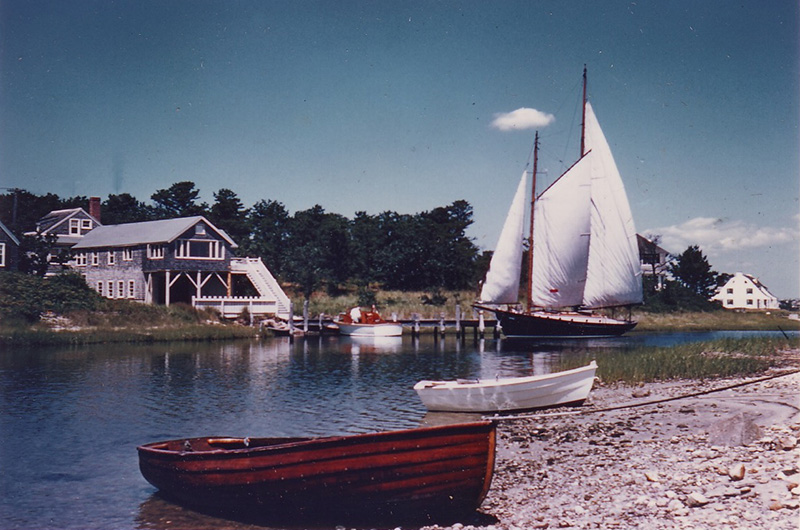The Francine Kelly Gallery at Featherstone will open its most ambitious exhibit to date, Harthaven Artists — Abbe/Low/Prizer with a reception on Sunday, July 22, at 3:30 p.m. The show will feature the work of Harthaven artists and the history of one of our Island’s unique communities, Harthaven, in a coordinated multimedia exhibit including video, photographs, a large memory cloud of quotes from residents and panels telling the communities story.
The Hart family first came to the Vineyard in the 1870s from the hardware capital of the world — New Britain, Conn. The family patriarch, William H. Hart, was president of Stanley Works (makers of those famous tools). He was inventive with many patents to his name, and is credited with developing the first American cold rolling process for manufacturing steel. In 1871 and 1873 he bought eight lots from the Land and Wharf Company in Oak Bluffs and combined them to provide an ample family compound. William and his wife Martha had five children — George, Howard, Edward, Maxwell, Walter and Martha. For more than 40 years the family summered in Oak Bluffs, but in 1911 William began buying up land south of Farm Pond, eventually acquiring property that extended all the way from the end of the Oak Bluffs seawall to the first inlet into Sengekontacket Pond. This was the beginning of a family settlement soon to be called Harthaven.
On Sept. 17, 1914, a Vineyard Gazette reporter visited William and Martha Hart’s new Harthaven home and published a gushing report. “There is a prospect that more new houses will be built in the new ‘Hart Settlement’ off the Beach Road,” she wrote. “It was our privilege to be shown over the lovely estate and new summer residence of Mr. Wm. H. Hart one day last week. Here are all the latest modern improvements and conveniences. Electric bells and electric lights all over the house and on the spacious piazzas . . . The house sets a long distance back from the road and is in the midst of groves of oaks and pines. A fine view of the sound is seen from the house as well as the interior ponds upon which his land borders. Mr. Hart has had broad roads cut through his land making a drive through the woods a great pleasure.”
The White House, as it is called by Harthavenites, still stands to the right of Beach Road as you drive along it from Oak Bluffs to Edgartown. William laid out lots and formed the Hart Realty company to manage and sell them. The community filled out. Martha Hart married Ethelbert Allen Moore and their house was built side by side with those of Howard, Walter, Edward and George.
When William purchased the land in 1911, the harbor was a swamp and considered an eyesore, but with foresight, he dredged it and opened it to the sea. For more than a century, the children of Harthaven have learned to row and sail in this harbor, discovering skills and confidence in themselves that lasted all their lives. “The harbor provided us with a safe place to grow up and experience the ocean and sea life on our own terms,” Lisa Hart remembers. “That’s the most precious gift Harthaven harbor gave me.”
Life in the community was from the beginning almost studiously informal — a place to escape the cares and the formalities of the mainland. “The older crowd seemed to exude a way of life that was abundant in humor and action,” remembered Stan Hart in a memoir, “and a style that flowed from a Yankee heritage. Another Yankee, Ralph Waldo Emerson, cautioned his fellow Americans — those who were borrowing their customs, morals and lifestyles from England and other European countries — when he wrote: ‘Insist on yourself, never imitate.’ I think of the older crowd that way. I doubt that they consciously imitated anything. They were as natural as an August northeaster or the herring run that fed through Harthaven into Farm Pond in Oak Bluffs.”
It was a place where children were allowed to run free, their parents knowing that they would be watched and cared for by relatives. “We ran through Martha’s Park or along the beach and entered any house at will,” Stan Hart, “finding another family of relatives apparently glad to have us. Cookies and fruit lay about for the taking and we helped ourselves.”
The annual clambake brought everyone together and cemented friendships. “The Harthaven Clambakes! Many of the community pitched in,” remembers John Moore, “shucking corn, peeling potatoes, wrapping pieces of swordfish in cabbage leaves, hauling tables, benches, cooking equipment and food over to the beach.”
Many of us who still live here are descendants of the first settlers. Alley Moore is the grandson of Ethelbert Allen Moore who married Martha Hart. “Harthaven is the only place I ever considered home,” he once said. “It’s where, as a little boy, I learned to ride a bike, first wobbling down the White House lawn. I finally ended up crashing into the huckleberry bushes after failing to step on the brake.”
It is one of those many remarkable places on Martha’s Vineyard where we feel the presence of our ancestors every day. The docks, beach, harbor and homes all bring back memories of people who have passed away — and their friendly spirits.
Today, Harthaven comprises about 60 homes and is becoming a year-round neighborhood. Many of the newer residents were attracted by the deep sense of belonging that abides from the earlier days. “This is a place where we felt we could be part of a real community,” says E.L. Edwards who built her home in Harthaven with her companion Alan Willens. “We felt we could become part of a neighborhood of people who liked each other and shared their lives.”









Comments
Comment policy »